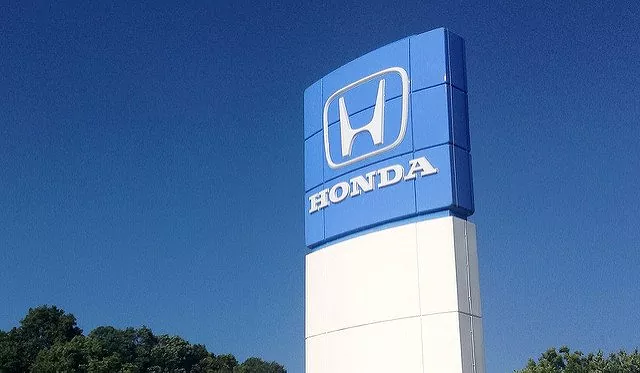Honda is one of the most recognizable automobile brands in the world, known for its high-quality vehicles, cutting-edge technology, and commitment to innovation. From humble beginnings as a small motorcycle manufacturer in Japan, Honda has grown into a global giant with a diverse range of products that cater to the needs of millions of customers around the world. In this article, we will explore the success story of Honda, highlighting its journey, achievements, and the factors that have contributed to its remarkable growth.
Honda was founded by Soichiro Honda and Takeo Fujisawa in 1948, with a vision to provide affordable and reliable transportation to the masses. Initially, the company focused on manufacturing motorcycles, and its first product, the Dream D-type, was released in 1949. The motorcycle quickly gained popularity due to its durability, fuel efficiency, and affordability, which became the hallmarks of Honda’s philosophy.
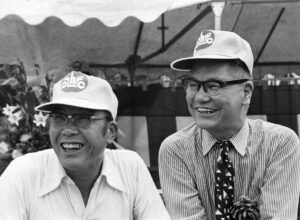
In the early 1960s, Honda decided to expand its product line by entering the automobile market. The company introduced its first car, the T360, in 1959, followed by the S500 sports car in 1964. However, it was the introduction of the Civic in 1972 that marked a significant turning point for Honda. The Civic was designed to be a compact, fuel-efficient vehicle that could meet the growing demand for cars in the wake of the oil crisis. Its success was unprecedented, and it quickly became one of the best-selling cars in the world.
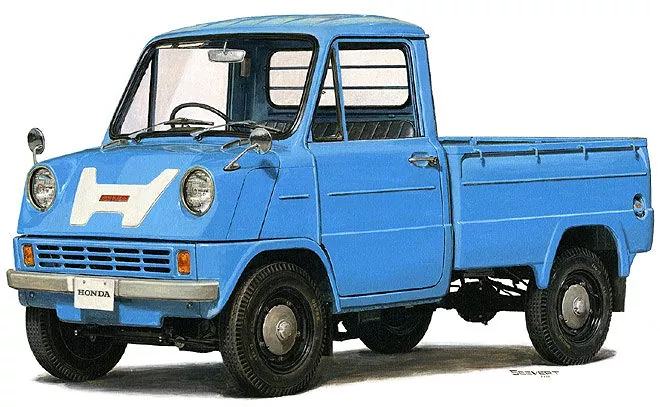
Honda’s focus on innovation and technology has been a key factor in its success. The company invests heavily in research and development, constantly pushing the boundaries of what is possible in the automotive industry. One of its most notable achievements is the development of the VTEC (Variable Valve Timing and Lift Electronic Control) engine, which revolutionized the way engines perform. VTEC technology allows engines to adjust their valve timing and lift to optimize power output and fuel efficiency, resulting in better performance and lower emissions. This technology has become synonymous with Honda and has been adopted across its entire product line.
Honda’s expansion into international markets began in the late 1970s, with the establishment of Honda Motor Company of America in 1979. The company continued to grow globally, setting up operations in Europe, Asia, and South America. Today, Honda is present in over 150 countries, with a network of dealerships, manufacturing plants, and R&D facilities. Its global reach has enabled it to tap into new markets, adapt to local preferences, and develop products tailored to specific regions.
Despite its success, Honda has faced several challenges and setbacks along the way. In the 1990s, the company struggled with quality issues, particularly with its luxury brand, Acura. It also encountered difficulties in the early 2000s due to a decline in demand for motorcycles and scooters. However, under the leadership of CEO Takanobu Ito, Honda implemented various cost-cutting measures and refocused its efforts on developing environmentally friendly technologies. These efforts paid off, and Honda bounced back stronger than ever.
Honda has achieved numerous milestones throughout its history. Some of its most notable accomplishments include:
- Producing its 100 millionth motorcycle in 1997
- Introducing the hybrid Insight model in 1999, which became the first production vehicle to use Honda’s Integrated Motor Assist (IMA) system
- Launching the FCX Clarity, a hydrogen fuel cell electric vehicle, in 2008
- Developing the Earth Dreams Technology series of engines, which offer improved fuel economy and reduced emissions
- Celebrating its 50th anniversary in 2014, with a total production volume of over 100 million vehicles worldwide
The success story of Honda is a testament to the power of innovation, perseverance, and customer satisfaction. From its humble beginnings as a small motorcycle manufacturer, Honda has grown into a global giant with a diverse range of products that cater to the needs of millions of customers around the world.
Success Factors of Honda
Honda is a well-known Japanese multinational corporation that has achieved significant success in various industries, including automobiles, motorcycles, and power equipment. The company’s success can be attributed to several factors, which include:
1. Strong Leadership
Honda’s success owes a huge debt to the visionary spirit of its founder, Soichiro Honda. This wasn’t a man for boardroom monotony; he was a transformational leader, fueled by dreams and a relentless appetite for innovation. From tinkering in his garage to driving the company to global heights, Soichiro instilled a culture of experimentation and passion that still pulsates through Honda’s veins today.
This isn’t just about buzzwords. Honda’s core values, like challenging the spirit, embracing joy, and respecting individual differences, aren’t just slogans on a wall; they’re lived experiences for every employee. Equality and fair treatment are cornerstones of their leadership, evident in their current executives: Seiji Kuraishi, Chairman, and Toshihiro Mibe, President and CEO. These leaders aren’t just figureheads; they’re champions of Soichiro’s legacy, embodying his spirit of pushing boundaries and inspiring their teams to dream big. This unique blend of visionary leadership, a passion for innovation, and a commitment to inclusivity is what truly sets Honda apart. It’s the secret sauce that turned a garage tinker into a global giant, reminding us that sometimes, the most successful journeys begin with a spark of passion and a leader who dares to dream.
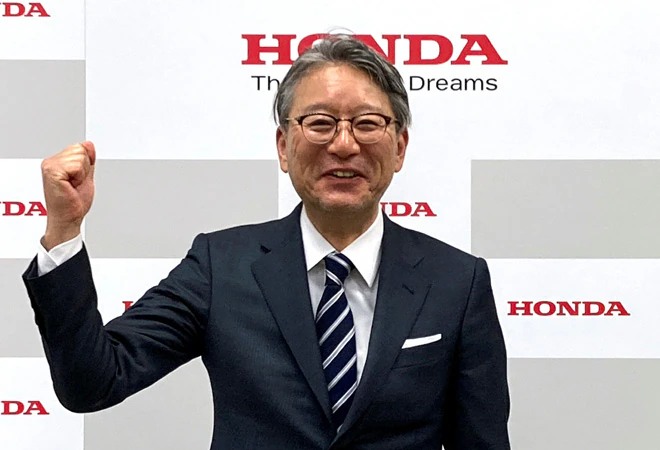
2. Innovation
Innovation serves as a cornerstone of Honda’s remarkable success in the automotive industry, distinguishing the company through a series of pioneering advancements. Among these, the introduction of flexible factories stands out as a groundbreaking approach facilitated by synchronized engineering. This innovation ensures vehicles entering assembly zones share common designs, emphasizing standardized locations and installation techniques. Honda’s commitment to efficiency and streamlined production sets the company apart in the competitive automotive landscape.
An integral part of Honda’s innovative arsenal is the Integrated Motor Assist (IMA) technology, a hybrid car system that utilizes a gasoline-electric drive to achieve superior fuel economy and minimize exhaust emissions. This technology reflects Honda’s dedication to environmentally conscious solutions without compromising performance. Furthermore, Honda’s e-clutch technology for motorcycles demonstrates the company’s prowess in electronic control technology, delivering instantaneous and finely-tuned clutch control. These advancements not only enhance the riding experience but also position Honda as a leader in innovative solutions for diverse transportation needs.
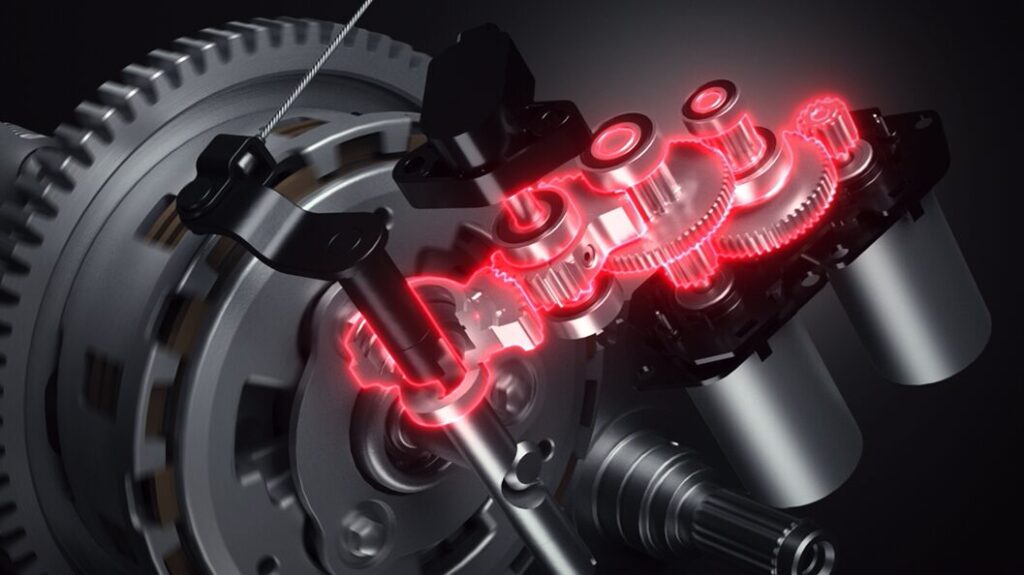
Looking towards the future of mobility, Honda’s foray into self-driving technology is noteworthy. In 2021, the company announced its ambitious goal to be the world’s first automaker selling a vehicle equipped with level 3 self-driving technology. This forward-thinking initiative exemplifies Honda’s proactive stance in embracing cutting-edge technologies, setting the stage for a new era in automotive safety and convenience. Additionally, Honda’s collaboration with Sony in March 2022 to develop and build electric vehicles reinforces its commitment to sustainable mobility solutions, marking a significant stride in the electric vehicle market.
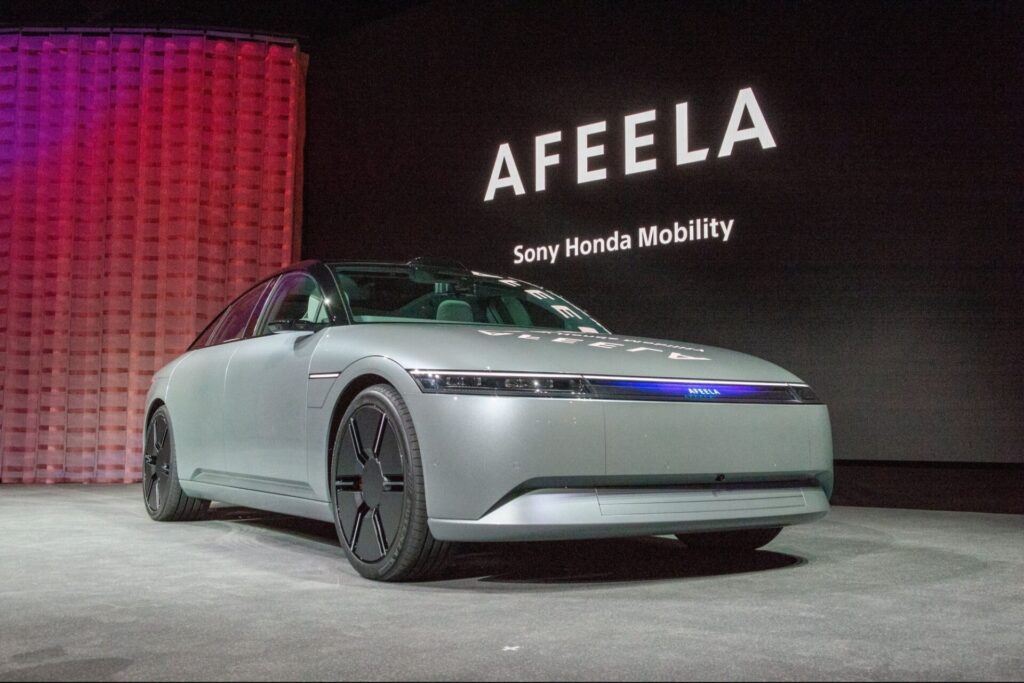
Beyond the realm of vehicles, Honda’s technological expertise extends to various domains, including autonomous mobility, environmental sustainability, carbon neutrality, electrification, connected systems, robotics, and artificial intelligence. This comprehensive approach showcases Honda’s holistic vision for the future of transportation, solidifying its position as an industry leader in innovation across a spectrum of cutting-edge technologies.
3. Quality
Quality stands as a paramount success factor for Honda, underpinning the company’s reputation for producing high-caliber and reliable vehicles. Honda’s commitment to delivering top-notch quality is evident in its meticulous engineering and manufacturing processes, where a laser focus on detail is a guiding principle. This commitment to excellence permeates every stage of production, setting a solid foundation for the renowned durability of Honda vehicles.
An essential aspect of Honda’s commitment to quality is its superior quality control. The company adheres to high engineering standards and employs top-notch manufacturing methods to ensure that each vehicle meets stringent quality benchmarks. This robust quality control system is ingrained in Honda’s manufacturing ethos, serving as a guarantee that every car leaving the production line is of the highest standard.
To further solidify its dedication to quality, Honda introduced the Global Honda Quality Standard (G-HQS) in April 2005. This comprehensive standardization initiative ensures that all Honda facilities worldwide adhere to a set of rigorous quality parameters, reinforcing a commitment to maintaining 120% product quality. The establishment of G-HQS demonstrates Honda’s proactive approach to maintaining and enhancing the quality of its vehicles on a global scale.
Honda’s unwavering commitment to quality is substantiated by consistently high-reliability ratings from external sources. RepairPal, an authoritative resource, awards Honda vehicles an impressive 4.0 out of 5 for safety and reliability, ranking Honda as the number 1 brand among the 32 car brands they survey. This external validation underscores Honda’s position as an industry leader in delivering not just vehicles, but a quality-driven automotive experience that customers can rely on.
4. Manufacturing Excellence
Honda’s manufacturing is a finely tuned ballet of innovation, quality, and sustainability. It’s about fueling research and development to build efficient, reliable vehicles that leave smiles on faces, not emissions in the air.
Their unwavering commitment to quality control is legendary. Imagine every bolt and rivet scrutinized, every engine purring perfectly before leaving the factory floor. This dedication has made them the world’s largest motorcycle manufacturer and the global leader in internal combustion engines. Talk about a testament to their expertise!
But it’s not just about technical prowess; Honda cares about your wallet too. They strive for affordability, ensuring quality doesn’t come with a sky-high price tag. And to top it all off, they’ve embraced the Green Factory concept, minimizing their environmental footprint every step of the way.
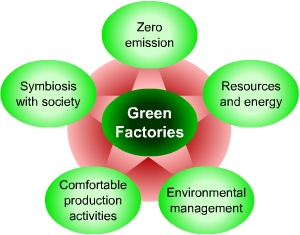
5. Supply Chain Management
Honda’s supply chain management is a critical component of its success, involving a complex system of sourcing, manufacturing, assembly, and distribution. The company’s purchasing policy prioritizes working with the most competitive suppliers to ensure that customers receive high-quality products. Additionally, Honda implements strict quality control measures throughout the production process to guarantee that its products meet the highest standards.
To maintain effective supply chain control, Honda operates manufacturing plants in the United States that assemble vehicles and produce parts. This allows the company to carefully monitor and manage every stage of the production process, ensuring that its products are of the highest quality and meet customer demands. Furthermore, Honda takes environmental and human rights issues into consideration when developing and optimizing its supply chains with suppliers worldwide, demonstrating its commitment to responsible and sustainable business practices.
Honda’s supply chain management strategy is designed to increase productivity and efficiency. The company divides work among different departments and supervises each stage of the process to ensure that everything runs smoothly. Moreover, Honda continuously explores new technologies to enhance its supply chain operations, further streamlining its processes and solidifying its position as a leader in the automotive industry. By prioritizing supply chain management, Honda has established a robust and efficient system that supports its global operations and drives its success.
6. Marketing and Branding
Honda doesn’t just sell cars; they sell feelings. This powerful sentiment lies at the heart of their multi-pronged marketing strategy, a carefully orchestrated symphony of advertising, branding, and storytelling.
First, Honda invests heavily in capturing your attention. From eye-catching television commercials to engaging social media campaigns, they showcase their latest innovations and unwavering commitment to reliability. These impactful ads aren’t just about features; they’re about igniting emotional connections with a diverse audience.
But Honda’s magic extends beyond flashy campaigns. Their strong brand identity resonates deeply with consumers. From their iconic logo to their mission statement emphasizing customer satisfaction, they project a trustworthy and approachable image. This consistency builds loyalty and emotional attachment, making Honda more than just a car company; it becomes a personal choice, a reflection of one’s values.
This emotional connection is further strengthened by their diverse product lineup. Whether you’re a thrill-seeking adventurer or a practical family driver, Honda has a vehicle that resonates with your needs and aspirations. Their commitment to catering to a wide range of lifestyles is a testament to their understanding of their customers’ hearts, not just their wallets.
Finally, Honda goes beyond advertising with compelling content marketing. They bring stories to life, showcasing how their cars enrich lives and create unique experiences. Through this emotional storytelling, they allow customers to truly understand the brand’s values and connect with them on a deeper level.
7. Financial Discipline
Honda navigates the financial world with the precision of a Formula One pit crew. While revenues may fluctuate, their unwavering commitment to financial discipline ensures consistent success on the bottom line.
Just look at their recent numbers. Despite a slight dip in overall revenue, Honda’s gross profit soared by nearly 30% in a single quarter. This magic trick isn’t fueled by smoke and mirrors, but by smart financial strategies.
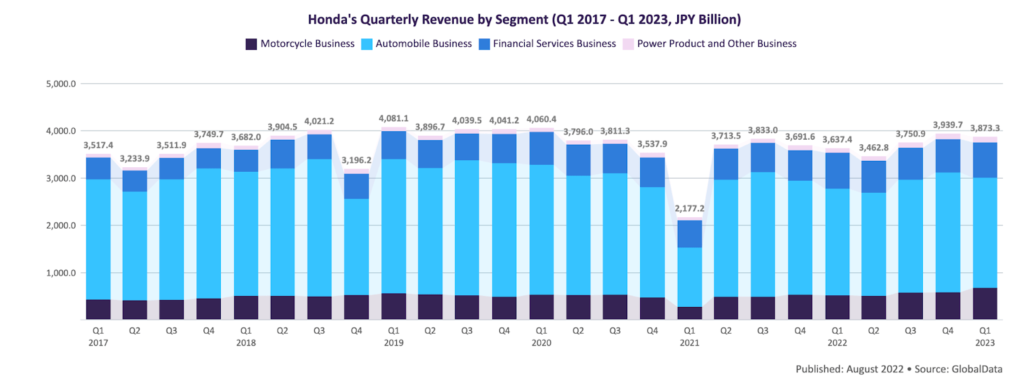
Streamlining their financial services segment plays a starring role. By focusing on reliable revenue streams like retail lending and leasing, particularly in the lucrative North American market, they build a financial bedrock for growth. This allows them to invest in R&D and innovation, driving their engine of long-term success.
And let’s not forget the power of their automotive core. As the heart of their revenue, accounting for nearly 70%, Honda meticulously optimizes this essential muscle. From cost-effective manufacturing to strategic resource allocation, they squeeze every ounce of potential from their automotive operations.
8. Global Presence
Honda’s markets include the Americas, Europe, Asia, and Australia. Honda’s products include passenger cars, light trucks, and mini-vehicles, as well as general-purpose engines, outboard marine engines, lawnmowers, and more.
- Japan: 0.55 million automobiles, 0.24 million motorcycles, and 0.37 million power products
- Asia: 1.74 million automobiles, 16.10 million motorcycles, and 1.40 million power products
- Europe, Africa, and the Middle East: 0.08 million automobiles
- North America: 1.19 million automobiles
- Other regions: 0.11 million automobiles
Honda has been expanding beyond Japan since it began exporting motorcycles in the 1950s. Honda creates jobs in each region, develops human resources, and continues to create products that are accepted in each market.
In 2022, Honda’s worldwide sales included 3.5 million vehicles for $80 billion.
9. Corporate Social Responsibility
From brightening classrooms to building stronger communities, Honda’s CSR efforts cover a vast spectrum. They bridge the education gap, giving young minds the tools to thrive. They nourish community development, ensuring everyone has a chance to flourish. They champion road safety, saving lives and fostering safer streets. And they nurture environmental preservation, leaving a greener legacy for future generations.
This isn’t just about feel-good gestures; it’s about tangible results. Their employment initiatives empower local youth, equipping them with valuable skills. Their environmental programs combat climate change, leaving a healthy planet for all. And their impressive road safety initiatives have saved an estimated 12,000 lives.
But Honda’s CSR goes beyond statistics. It’s about inspiration and connection. Initiatives like the Green Dealer Spotlight and the Honda Battle of the Bands celebrate creativity and community spirit, fostering a sense of shared purpose. These programs remind us that a successful company is not just about bottom lines, but about the positive ripples it creates in the lives of individuals and communities.
These success factors have contributed significantly to Honda’s growth and prosperity over the years. By focusing on innovation, quality, customer satisfaction, manufacturing excellence, supply chain management, marketing and branding, financial discipline, global presence, and corporate social responsibility, Honda has established itself as a leading global brand with a strong foundation for future success.
Also Read: Marketing Strategies and Marketing Mix of Honda Motors
To read more content like this, susbcribe to our newsletter
